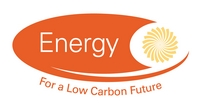Projects
Projects: Projects for Investigator |
||
| Reference Number | NIA_NGTO012 | |
| Title | The application of Parametric Design to automate substation development | |
| Status | Completed | |
| Energy Categories | Other Cross-Cutting Technologies or Research 80%; Other Power and Storage Technologies(Electricity transmission and distribution) 20%; |
|
| Research Types | Applied Research and Development 100% | |
| Science and Technology Fields | ENGINEERING AND TECHNOLOGY (Civil Engineering) 100% | |
| UKERC Cross Cutting Characterisation | Not Cross-cutting 100% | |
| Principal Investigator |
Project Contact No email address given National Grid Electricity Transmission |
|
| Award Type | Network Innovation Allowance | |
| Funding Source | Ofgem | |
| Start Date | 01 August 2018 | |
| End Date | 01 July 2019 | |
| Duration | ENA months | |
| Total Grant Value | £97,000 | |
| Industrial Sectors | Power | |
| Region | London | |
| Programme | Network Innovation Allowance | |
| Investigators | Principal Investigator | Project Contact , National Grid Electricity Transmission (100.000%) |
| Industrial Collaborator | Project Contact , National Grid plc (0.000%) |
|
| Web Site | https://smarter.energynetworks.org/projects/NIA_NGTO012 |
|
| Objectives | Recent developments in design automation using Parametric Design have the potential to deliver savings in the development of new electrical infrastructure projects. The premise of Parametric Design is to automatically generate the layout of the assets based on the rules defined by the technical specifications; rather than an individual designing to the specifications. Parametric design uses algorithms to generate a hierarchy of mathematical and geometric relations that allow the automatic generation of a new design, while also allowing you to explore the whole range of possible solutions that the variability of the specifications may allow. The traditional design method only allows one option to be assessed at a time; while Parametric Design will make it easier and quicker to assess different design options and the potential savings that can be achieved. In other words, parametric design is almost like programming, but for material objects, where you set rules for the design to follow which are based on your design criteria. It is proposed that parametric design can be applied to automate the design process for substation extensions. This project will perform a desktop feasibility study into using Parametric Design for a substation extension, which will: Define the key design rules which need to be complied with and can be automated. Determine any limiting factors which cannot be taken into account or automated. Specify the key input data needed for the parametric design process. Perform a high-level cost benefit analysis to establish if the approach is feasible and quantify benefit it could bring. The feasibility study will be delivered in the form of a report detailing the above items. Determine the feasibility of applying Parametric Design to electricity substation design Define the design rules which can be applied as parametric rules Determine the input data required to facilitate the parametric design and efforts required to collect this Establish the overall feasibility (cost, benefit, time saved) of this approach for the design of the electricity substations (both new and modification of existing ones) | |
| Abstract | Civil engineering work makes up a large proportion of the total cost of building electrical infrastructure. Savings made during the design or construction of civil infrastructure can therefore have a huge impact on the cost of network investment. National Grid is striving to develop innovative civil infrastructure solutions which meet the required specifications, while also reducing costs and development times.Established design processes using Computer Aided Design (CAD) and structural analysis software save some time, but arent presently flexible enough to allow multiple design options to be explored quickly and efficiently. This project aims to address this deficiency. | |
| Data | No related datasets |
|
| Projects | No related projects |
|
| Publications | No related publications |
|
| Added to Database | 02/12/22 | |



